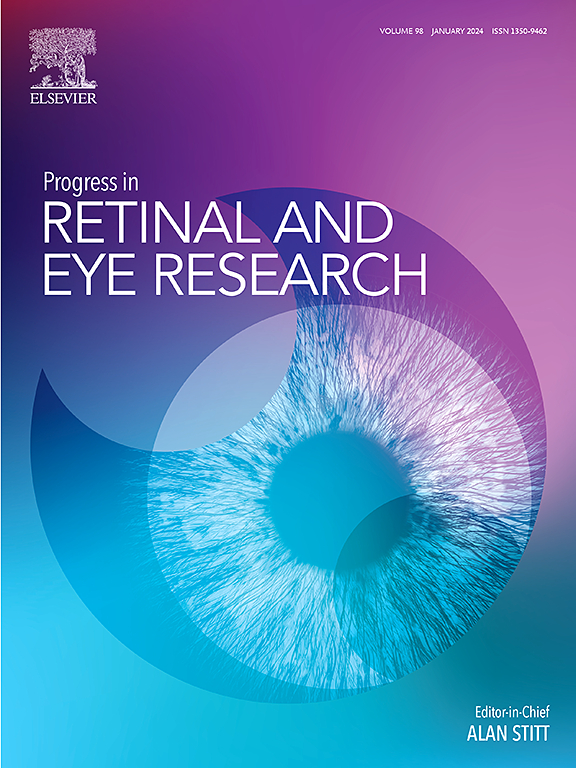Replacing the vitreous body with hydrogels: Rationale and strategies
IF 14.7
1区 医学
Q1 OPHTHALMOLOGY
引用次数: 0
Abstract
During vitreoretinal surgery, the vitreous body is removed and requires a suitable replacement to ensure ocular homeostasis, as the native vitreous does not regenerate. An ideal vitreous substitute should mimic the optical, mechanical, and biochemical properties of the natural vitreous while maintaining long-term biocompatibility. Currently, clinically used substitutes such as gases and silicone oils facilitate retinal reattachment but deviate significantly from the native vitreous, leading to complications such as cataract formation, increased intraocular pressure, and emulsification. Given these limitations, there is a growing interest in hydrogels as potential vitreous substitutes due to their similarity to the native vitreous. This review therefore aspires to provide a comprehensive and detailed overview of current knowledge on the structural and biochemical composition of the vitreous, the challenges associated with existing substitutes, and recent advancements in vitreous replacement technologies. Particular attention is given to preformed and in-situ forming hydrogels, based on biopolymers and synthetic polymers, discussing their chemical composition, diverse characteristics with regard to the multiple requirements for vitreous substitutes, and clinical applicability. Finally, future challenges and opportunities in developing an ideal vitreous substitute are highlighted, including vitreous substitutes as drug delivery systems as well as cellularized vitreous substitutes by combining advanced hydrogel systems with hyalocytes as vitreous cells to further replicate the versatile characteristics and functions of the native vitreous.
用水凝胶代替玻璃体:原理和策略
在玻璃体视网膜手术中,玻璃体被移除,需要一个合适的替代物来确保眼内平衡,因为原生玻璃体不能再生。理想的玻璃体替代品应在保持长期生物相容性的同时,模仿天然玻璃体的光学、机械和生化特性。目前临床上使用的气体、硅油等替代物有利于视网膜再附着,但明显偏离原玻璃体,导致白内障形成、眼压升高、乳化等并发症。鉴于这些局限性,由于水凝胶与天然玻璃体的相似性,人们对作为潜在玻璃体替代品的水凝胶越来越感兴趣。因此,本综述希望对玻璃体的结构和生化组成、现有替代品的挑战以及玻璃体替代技术的最新进展提供一个全面而详细的概述。特别关注基于生物聚合物和合成聚合物的预成型和原位成型水凝胶,讨论它们的化学组成、玻璃体替代品的多种要求的不同特征以及临床适用性。最后,强调了开发理想玻璃体替代品的未来挑战和机遇,包括作为药物递送系统的玻璃体替代品,以及通过将先进的水凝胶系统与玻璃细胞结合作为玻璃体细胞来进一步复制天然玻璃体的多功能特性和功能的细胞化玻璃体替代品。
本文章由计算机程序翻译,如有差异,请以英文原文为准。
求助全文
约1分钟内获得全文
求助全文
来源期刊
CiteScore
34.10
自引率
5.10%
发文量
78
期刊介绍:
Progress in Retinal and Eye Research is a Reviews-only journal. By invitation, leading experts write on basic and clinical aspects of the eye in a style appealing to molecular biologists, neuroscientists and physiologists, as well as to vision researchers and ophthalmologists.
The journal covers all aspects of eye research, including topics pertaining to the retina and pigment epithelial layer, cornea, tears, lacrimal glands, aqueous humour, iris, ciliary body, trabeculum, lens, vitreous humour and diseases such as dry-eye, inflammation, keratoconus, corneal dystrophy, glaucoma and cataract.

 求助内容:
求助内容: 应助结果提醒方式:
应助结果提醒方式:


